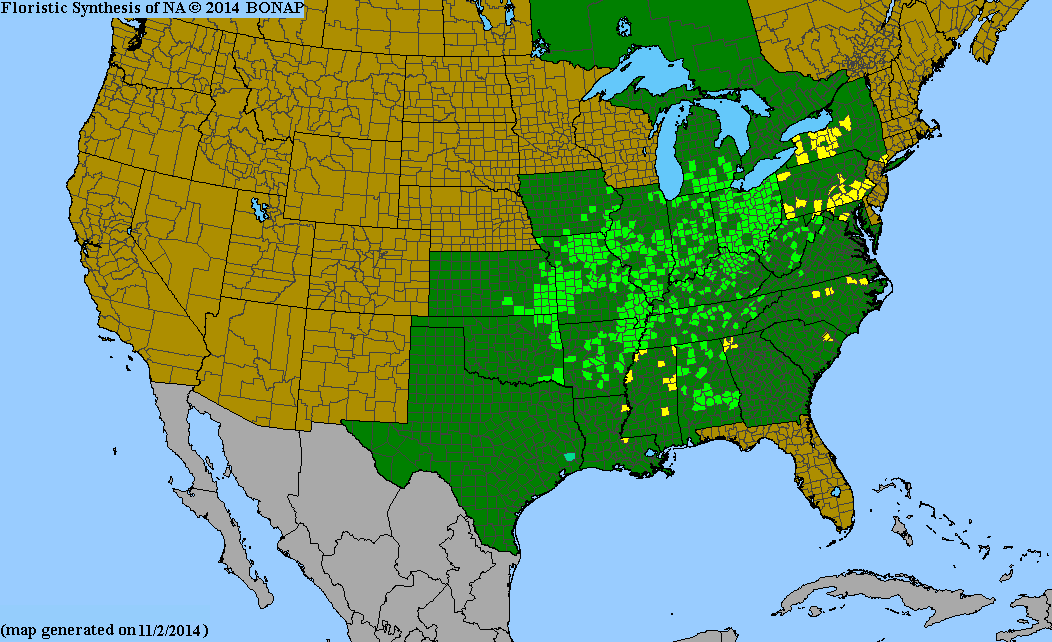Bareroot Plant Material
Shellbark Hickory
Shellbark Hickory
25 plants per unit
Carya laciniosa, or Shellbark Hickory, is native to Kansas and Eastern United States. It is a large tree with a broad, round crown reaching a height of 65 to 100 feet. Shellbark Hickory has a rapid growth rate. It may take several years for the roots to get established before it grows much in height.
Leaves, Stems and Fruit
The compound leaves are 10 to 24 inches long and are borne alternately on the stem. They have 7 individual leaflets, each one curved to a tapering point. They are dark green. The fruit is a nut, 2 inches long. The mature bark is grayish-brown and has a shaggy appearance.
Use
Timber - Shellbark Hickory is an excellent timber species. This hardwood is used in the production of wood for tool handles, paneling and furniture. The nuts are highly prized for their food value, making them an important cash crop.
Wildlife Habitat - Shellbark Hickory nuts are a favorite food source of squirrels and various types of birds.
Adaptation and Soil
Shellbark Hickory has adapted statewide and grows best on deep, fertile bottomland soils. It tolerates many wet soils even when ponded during spring and overflow periods. Growth is greatly restricted on upland droughty sites.
Spacing
Spacing for timber and nut plantings may vary from 8 x 8 feet to 15 x 15 feet. Periodic thinnings during the life of the stand are used to reduce the number of trees for maximum productivity.
Culture
One-year-old, bare root seedlings, 18 to 24 inches tall or stratified nuts (those that have undergone cold treatment) are used in plantings. Shellbark Hickory can be planted successfully if the site is properly prepared, and good weed control is practiced. Initial growth is slow but accelerates once the root system becomes established.
Pests
Shellbark Hickory leaves are a favorite food of the tent caterpillar. Several pests, such as the shuck worm and weevils, may cause damage to the nuts if not controlled. Generally, diseases are not a serious problem.



